How USAID helped a promising business devastated by the COVID-19 pandemic.
Revitalizing Cabo Verde’s Fishing Industry
.
Posted
March 25, 2024 .
1 min read.
Cécile has been working her whole life.
She never finished high school, dropping out to help her mother. When her mother died, she worked to take care of her siblings and then her own child. But she says she never wants to stand still.
She got a job with EcoCajou and now she helps supervise other women in their factory. Cashew nuts are one of Côte d’Ivoire’s largest exports, but less than 5% of them are processed. Instead, the raw cashew kernels are often sent to Asia for processing.
But EcoCajou leveraged a $800,00 co-investment from USAID’s West Africa Trade & Investment Hub to build a 15,000 metric ton-per-year processing plant that allows them to revitalize the cashew industry in the country while improving employment for women and economic outcomes for cashew farmers.
EcoCajou’s new facility has created 480 new jobs and will directly benefit 5,390 cashew producers who rely on the nut as their primary cash crop. As it prepares to increase exports to international markets, EcoCajou is also able to support 4,085 producers in complying with organic certification requirements and developing cashews on their plantations, contributing to a sustainable and resilient agricultural landscape in West Africa.
Funded by the U.S. Agency for International Development (USAID), the West Africa Trade & Investment Hub (Trade Hub) is a five-year (2019–2024) program that improves private sector productivity and competitiveness through market-based approaches.
The program partners with U.S. and West African private sector firms to generate new private sector investment in key industries as a way to create jobs and increase trade within and between West African countries, and with the United States through greater utilization of the African Growth and Opportunity Act (AGOA).
It is an integral part of and contributor to the U.S. Government’s Prosper Africa initiative, which is supported by USAID Missions across West Africa.
When Eric N’Guetta moved back to his home country of Côte d’Ivoire, he knew he wanted to use his experience to make a difference. After studying finance in Paris and spending ten years working in major European finance hubs like Luxembourg and Monaco, the young Ivorian realized he wanted to help people in his own country. “I decided to return to Côte d’Ivoire – not to Abidjan, but to remote places where there is nothing – and start a new life as an entrepreneur,” N’Guetta said. He created Bio Amandes, a company that produces and processes shea butter by supporting local woman producers.
With support from the USAID West Africa Trade & Investment Hub, Bio Amandes was able to build a 2,500 million ton-a-year refinery sourcing from 1,801 woman collectors of shea nuts. Bio Amandes is just one example of how private sector investment in West Africa is boosting livelihoods for local women.
Funded by the U.S. Agency for International Development (USAID), the West Africa Trade & Investment Hub (Trade Hub) is a five-year (2019–2024) program that improves private sector productivity and competitiveness through market-based approaches. The program partners with U.S. and West African private sector firms to generate new private sector investment in key industries as a way to create jobs and increase trade within and between West African countries, and with the United States through greater utilization of the African Growth and Opportunity Act (AGOA).
It is an integral part of and contributor to the U.S. Government’s Prosper Africa initiative, which is supported by USAID Missions across West Africa.
With a burgeoning population and growing market, West Africa has a high demand for animal protein. But farmers in Côte d’Ivoire face significant challenges accessing high-quality animal feed, limiting their production abilities. Small-scale farmers like Awa Kaboré are beginning to meet those needs thanks to a new animal feed mill. The USAID West Africa Trade & Investment Hub is supporting the agricultural sector in Côte d’Ivoire through facilities like the De Heus animal feed mill in Abidjan, which has been able to boost production and employ women and youth in its factory.
Funded by the U.S. Agency for International Development (USAID), the West Africa Trade & Investment Hub (Trade Hub) is a five-year (2019–2024) program that improves private sector productivity and competitiveness through market-based approaches. The program partners with U.S. and West African private sector firms to generate new private sector investment in key industries as a way to create jobs and increase trade within and between West African countries, and with the United States through greater utilization of the African Growth and Opportunity Act (AGOA).
It is an integral part of and contributor to the U.S. Government’s Prosper Africa initiative, which is supported by USAID Missions across West Africa.
Lorsqu’Eric N’Guetta est revenu dans son pays d’origine, la Côte d’Ivoire, il a su qu’il voulait mettre son expérience à profit pour faire bouger les choses. Après avoir étudié la finance à Paris et passé dix ans à travailler dans de grands centres financiers européens comme le Luxembourg et Monaco, le jeune Ivoirien s’est rendu compte qu’il voulait aider les gens dans son propre pays. Il a créé Bio Amandes, une entreprise qui produit et transforme le beurre de karité en soutenant les productrices locales.
Avec le soutien du West Africa Trade & Investment Hub de l’USAID, Bio Amandes a pu construire une raffinerie de 2 500 millions de tonnes par an en s’approvisionnant auprès de 1 801 femmes collectrices de noix de karité. Bio Amandes n’est qu’un exemple de la manière dont les investissements du secteur privé en Afrique de l’Ouest stimulent les moyens de subsistance des femmes locales.
La noix de cajou est l’un des principaux produits d’exportation de la Côte d’Ivoire, mais moins de 5 % d’entre eux sont transformés. Au lieu de cela, les amandes de cajou brutes sont souvent envoyées en Asie pour y être transformées. EcoCajou a obtenu un co-investissement de 800 000 dollars du West Africa Trade & Investment Hub de l’USAID pour construire une usine de transformation d’une capacité de 15 000 tonnes métriques par an, ce qui lui permet de revitaliser l’industrie de la noix de cajou dans le pays tout en améliorant l’emploi des femmes et les résultats économiques des producteurs de noix de cajou. La nouvelle installation d’EcoCajou a créé 480 nouveaux emplois et bénéficiera directement à 5 390 producteurs de noix de cajou qui en font leur principale culture commerciale.
Alors qu’elle se prépare à augmenter ses exportations vers les marchés internationaux, EcoCajou est également en mesure d’aider 4 085 producteurs à se conformer aux exigences de la certification biologique et à développer les noix de cajou dans leurs plantations, contribuant ainsi à un milieu agricole durable et résilient en Afrique de l’Ouest.
Avec une population en plein essor et un marché en pleine croissance, l’Afrique de l’Ouest connaît une forte demande en protéines animales. Mais les agriculteurs de Côte d’Ivoire sont confrontés à d’importantes difficultés d’accès à des aliments pour animaux de haute qualité, ce qui limite leurs capacités de production. Les petits producteurs comme Awa Kaboré commencent à faire face à ces besoins grâce à une nouvelle usine de production d’aliments pour animaux.
Le West Africa Trade & Investment Hub de l’USAID soutient le secteur agricole en Côte d’Ivoire par le biais d’installations telles que l’usine d’aliments pour animaux De Heus à Abidjan, qui a été en mesure de stimuler la production et d’employer des femmes et des jeunes dans son usine.
A USAID-funded project that uses public funds as a catalyst for greater private-sector investment has succeeded in stimulating economic growth in Ghana and throughout West Africa while bolstering food security.
Grants through the USAID West Africa Trade & Investment Hub have spurred five times their amount in private investment, organizers told an audience of investors and officials at an event in Accra summarizing project results to date.
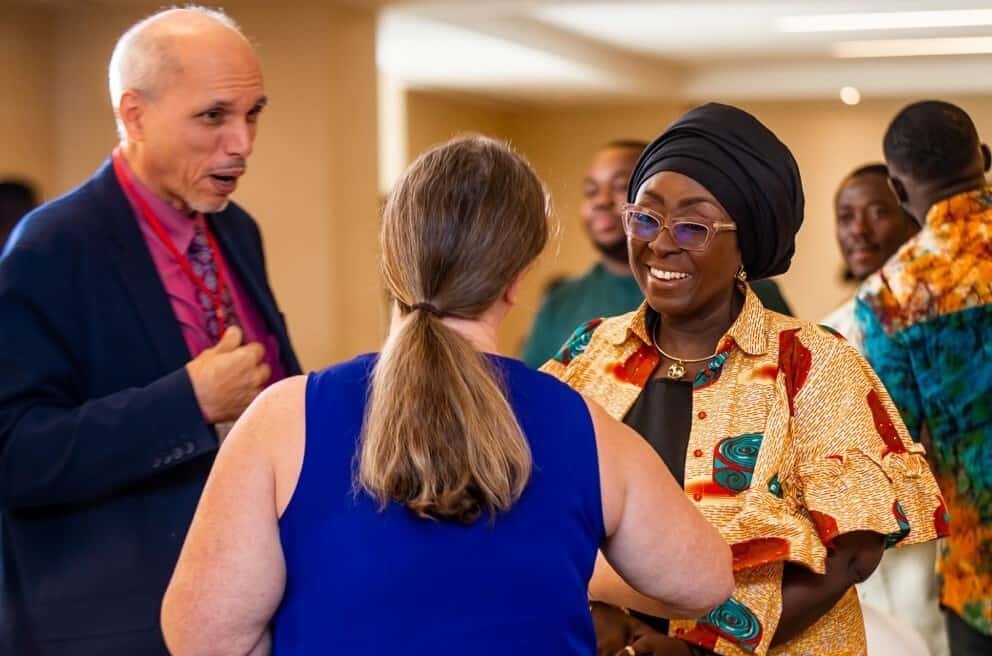
In Ghana, the Trade Hub has awarded $8.5 million in co-investment grants to nine private sector companies, catalyzing $43.7 million in new private investments, organizers said. Those projects generated $17.9 million in sales and $96.1 million in exports—$87.5 million of it to the United States through trade preferences under the African Growth and Opportunities Act (AGOA). Those public-private partnerships have created 20,647 jobs in Ghana, of which some 17,500 are held by women and more than 8,000 held by youth.
“Since project inception, the Trade Hub has exemplified the power of partnership, innovation and strategic investment,” Andrew Read, USAID/Ghana Economic Growth Office Director, told attendees at the event on Feb. 28, 2024. “It has driven significant progress across key sectors, including agriculture, apparel and personal care.”
Since its launch in 2019, the Trade Hub has awarded $83 million in co-investment grants to 92 private-sector companies in West Africa, enabling $408 million in private-sector spending which drove new revenue and job creation.
Trade Hub Chief of Party Robin Wheeler explained that this public-private partnership has been transformative for Ghana and the rest of the program’s target countries.
“Through these locally driven co-investment projects, the Trade Hub and our partners have generated almost $611 million in sales and over $203 million in exports, with almost $110 million being exported to the U.S.,” Wheeler said at the event. “Regarding the workforce, we have added over 74,000 jobs to the West African economy, with more than half being held by women.”
The event in Ghana gathered more than 60 participants, including business owners who described how the co-investment grants had mitigated their risks and enabled them to grow. They were joined by investors, USAID officials, and representatives of Ghana’s Parliament, Ministry of Finance, Investment Promotion Center, and Export Promotion Authority.

Panel discussions and exhibits provided examples of the economic projects’ impact on people’s lives. Entrepreneurs from AMAATI Company Limited, Nuts for Growth, and Warc shared the unique practices and innovations that have improved their supply chains in fonio, shea, soy and maize while increasing smallholders’ productivity and profits. Other speakers discussed their achievements and strategies in implementing their co-investment projects despite complex challenges such as global inflation, supply chain disruptions, and the economic effects of COVID-19.
Strengthening the national and regional economy supports the urgent mission of preparing Ghana’s food system to meet the needs of a growing population amid the rising threat of drought, speakers noted. Jacob Gyamfi-Aidoo of Ghana’s National Coordination Office for the African Continental Free Trade Area thanked the Trade Hub for highlighting food security.
“Addressing malnutrition and hunger are not just humanitarian efforts,” said Gyamfi-Aidoo, Senior Advisor for Stakeholder Engagement and Capacity Building. “It is an investment in international peace and security, safeguarding the well–being of nations.” Gyamfi-Aidoo said increased trade will lead to exchanges of knowledge, “contributing to diversified food sources and a more resilient food system.”
Gyamfi-Aidoo said his office is committed to collaborating with the Trade Hub project to work towards ensuring food security in the region. “We together hope that we will forge a path towards a more secure, prosperous and interconnected future for Africa,” he added.
The Trade Hub is also strengthening food security by encouraging its private-sector partners to adopt climate change-adaptive methods, USAID/Ghana’s Read noted.
“The Trade Hub’s efforts in promoting climate-smart and biodiversity-related activities highlight USAID’s commitment to environmental sustainability,” Read said. “From promoting regenerative agricultural production of cereals, which enhance soil health, to reducing the carbon dioxide emissions produced by the shea butter sector through improved processing facilities, we are not only contributing to the global fight against climate change but also ensuring the sustainability of agriculture-led economic growth in Ghana.”

Kevin McGlothlin, Director of the Regional Economic Growth Office at USAID/West Africa, encouraged business leaders to adapt to changing conditions and aspire to resilience. McGlothlin emphasized that public-private partnerships will be crucial for the region’s growth to continue.
“While the numbers are impressive and tell an important story, we also celebrate the tangible illustrations of improved livelihoods and empowered communities across Ghana,” Wheeler said. “As this model plays out throughout West Africa, it will […] contribute to broad-based and inclusive economic growth and resilience in the region, while also transforming the lives of countless people for the better.”
In the wake of the devastating conflict impacting Ethiopia’s Tigray, Amhara, and Afar regions, art brought hope and healing to tens of thousands of children scarred by the war.
Based on artwork created by 11,000 students in those three regions, 56 pieces were selected as finalists and 30 of these were chosen to be displayed during an exhibition called “Brighter Futures” organized by USAID and the READ II Education Recovery Activity in the nation’s capital.
The two-year conflict had a profound impact on the lives of students and their families, with hundreds of schools damaged or destroyed, learning materials ruined and educational activities upended. Recognizing the urgent need to address the trauma and prioritize education, the READ II Education Recovery Activity (READ II ER), implemented by Creative and its partners, stepped in to provide support during and after the war.
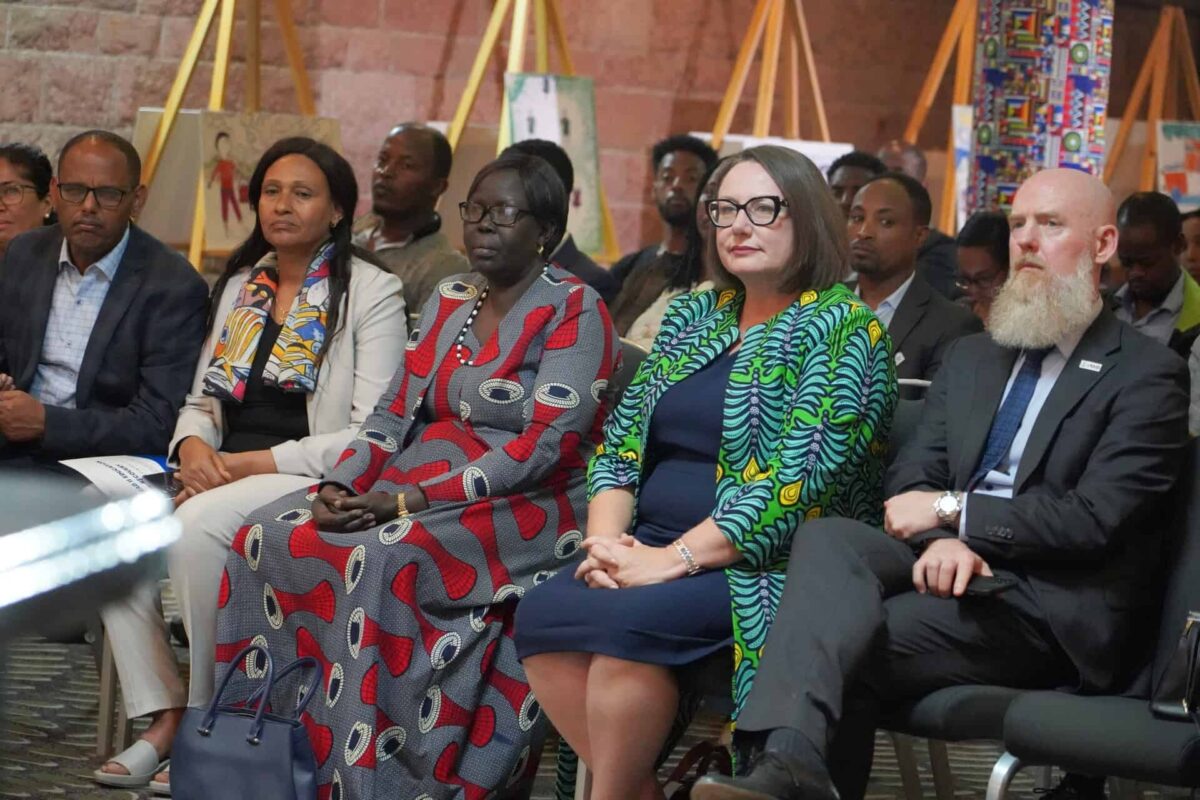
To learn more about these trauma-informed efforts, please see this short video.
One of the READ II ER’s approaches used art as a therapeutic tool. Local artists and art teachers from schools asked students to express their emotions through drawings, providing them a much-needed outlet for relaxation and healing. In 2022, the art therapy program targeted children in internally displaced persons (IDP) camps, host communities and schools affected by the conflict.
To learn more about art as therapy, please see this short video.
The success of this exercise led to the development of an art competition involving 156 schools across the three regions. From October 2022 to July 2023, art instructors from the Regional Colleges of Teacher Education worked with primary school art teachers and local artisans, who worked with nearly 11,000 fourth and fifth graders across the three regions.
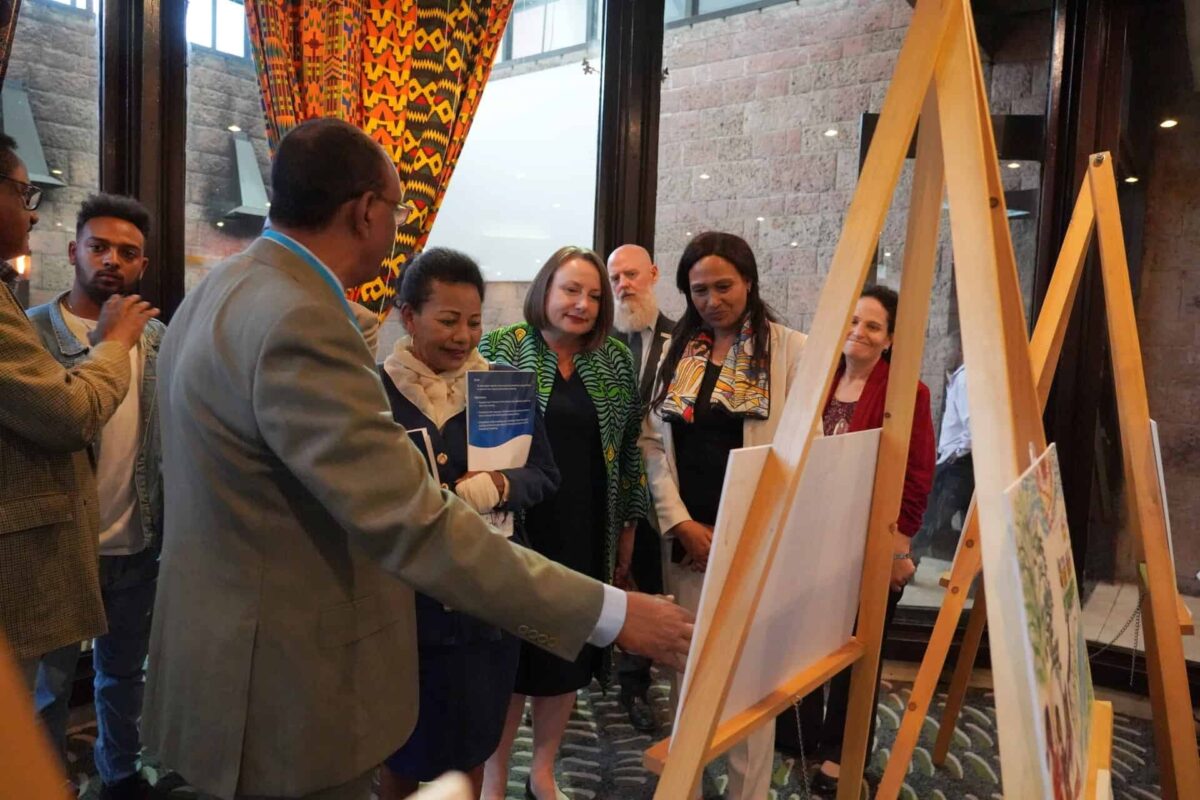
The competition events showcased the incredible talent and resilience of the children. The 30 artworks selected and displayed at the Addis Ababa Hilton Hotel from Jan. 23 to 29, 2024, represent these young artists’ creativity and emotional journey, capturing their experiences and hopes for a brighter future. The U.S. Embassy Deputy Chief of Mission, Gwendolyn Green, inaugurated the exhibition.
The art show attracted a diverse audience, including prominent figures from the local art industry, representatives from international organizations, and officials from the federal government and USAID Ethiopia. The event received extensive coverage from local media outlets.
During the weeklong art exhibit, various local schools brought their students to view the drawings and discuss their hopes for the future. The exhibit will be moved to a local library, then to Bole International Airport.
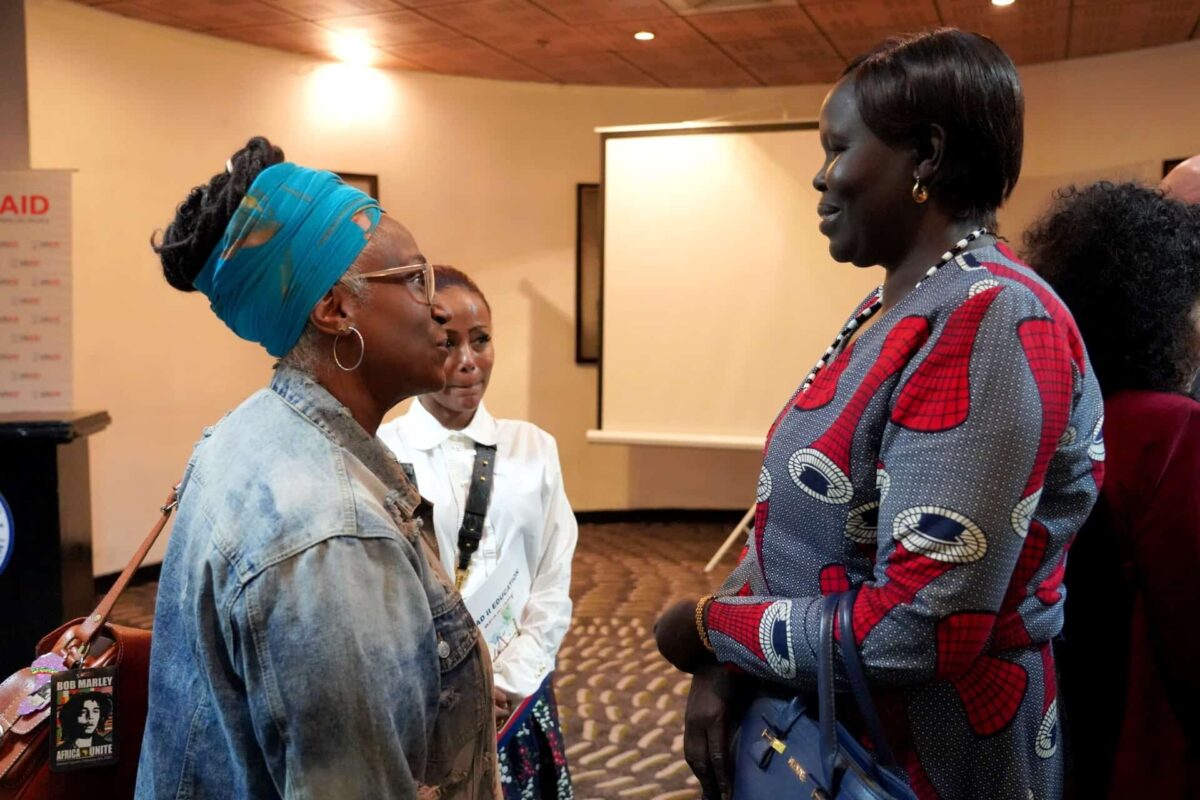
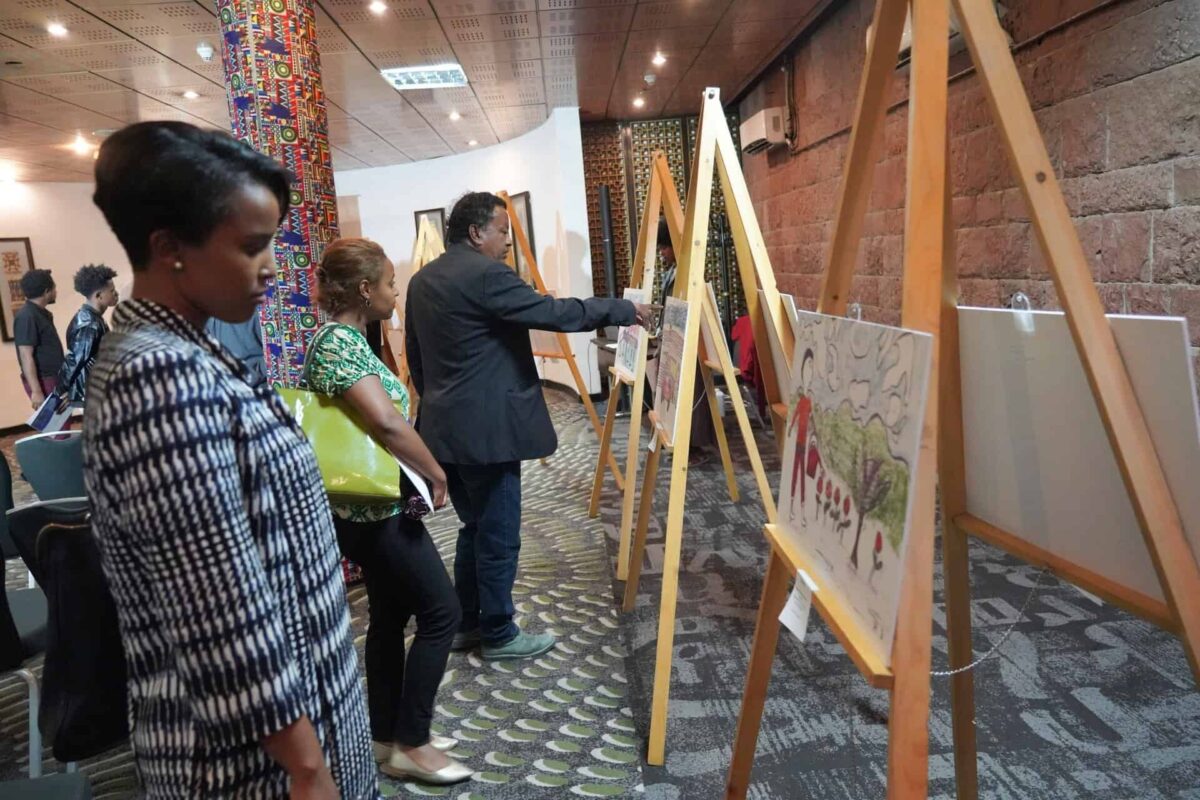
Through the power of art, this exhibition highlights the immense challenges faced by children affected by conflict and celebrates their resilience and ability to heal. It serves as a reminder of the importance of prioritizing education and providing psychosocial support to help children overcome trauma and rebuild their lives.
One of the lasting benefits of the competition was the reintroduction of art into participating schools’ curricula, which will continue to support children as they rebuild their resilience.
The READ II Education Recovery Activity provides scholastic and recreational materials to schools and trains schoolteachers and administrators in psychosocial services, psychological first-aid, socio-emotional learning and more.
READ II ER supported over 700,000 students in 1,156 conflict-affected primary schools in 100 districts. The activity provides basic school supplies, furniture, and tents for schools and temporary learning centers to help teachers and students resume teaching and learning activities. READ II ER supports regional and local back-to-learning efforts through targeted campaigns, posters, public service radio announcements, and mobile hotline push messages.
“Fulbe is our name. Fulani is not,” the Fulbe Chief for the Tumu Traditional Area said. “It is a name given to disrespect and stigmatize us. When you are called ‘Fulani,’ it means you are worthless.”
In Ghana’s Upper West region, the usage of the term “Fulani,” coupled with the marginalization and exclusion of the Fulbe from decision-making and community engagements, has amplified conflict and destabilizing dynamics.
In a region already susceptible to violent extremism and insurgency from the Sahel, residents highlight tensions primarily revolving around disputes over land and water access. Violent extremists exploit these conflicts to recruit followers among the Fulbe population.
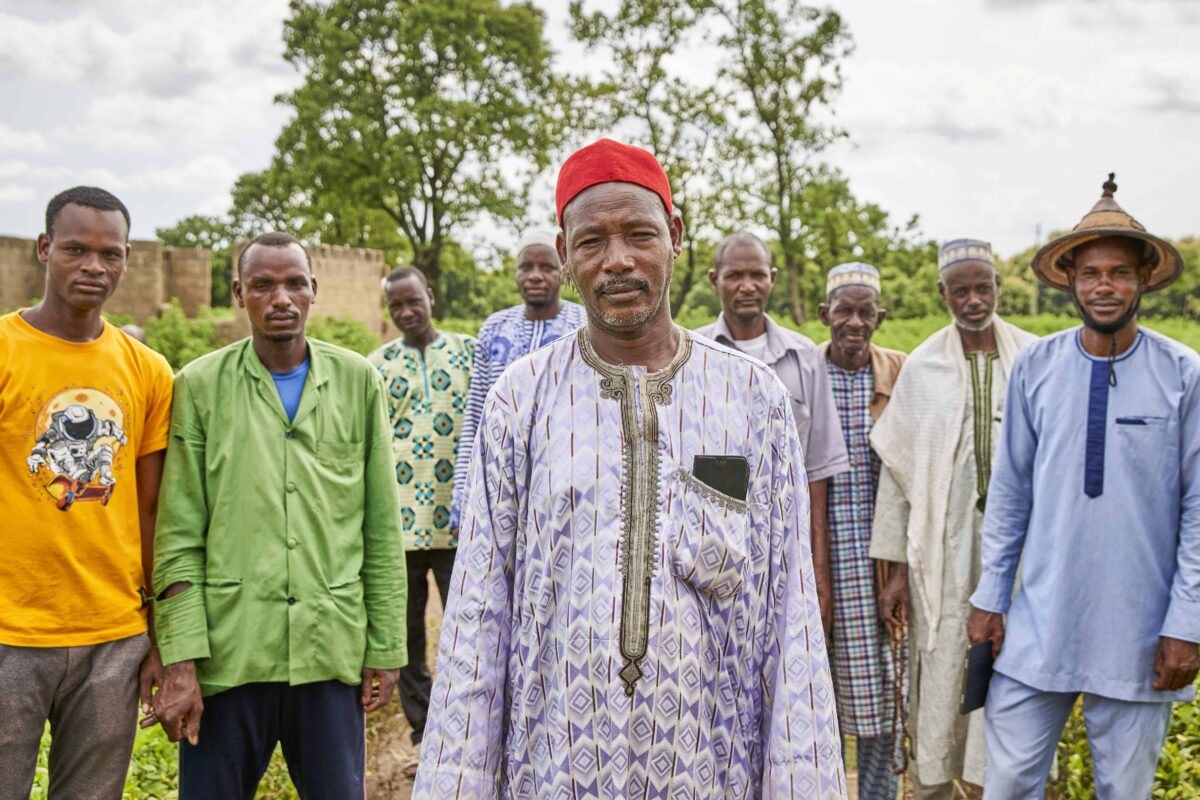
To better understand the complex relationship among Fulbe and non-Fulbe ethnic groups in Ghana’s Upper West Region, USAID/OTI’s Littorals Regional Initiative, in collaboration with local NGO SAVE-Ghana, conducted a survey from June to August 2021 to chart relationships between the region’s ethnic groups. The survey shed light on the strained relations between Fulbe and non-Fulbe communities and proposed potential solutions to address the situation.
Following this survey, Littoral Regional Initiative and SAVE-Ghana organized dialogues with District Assembly members, traditional leaders, and community stakeholders to share the survey’s insights.
Fast forward two years, significant strides have been made. These dialogues have resulted in concrete commitments and landmark initiatives across the region, fostering improved relationships between the Fulbe, local authorities, and other ethnic groups. Case in point: nearly 80 percent of districts, including Sissala East and Jirapa Municipality, now use the term “Fulbe” instead of “Fulani.”
Community councils, for the first time, have also welcomed Fulbe traditional leaders to voice their concerns, leading to tangible improvements in their quality of life and community standing. In Tumu, cattle rate taxes — previously double for Fulbe people compared with other ethnic groups — were reduced, not only easing financial burdens but also increasing tax compliance and district revenue.
“I advocated for reducing cattle rate taxes for the Fulbe, and I was heard,” said a Fulbe traditional leader from Tumu. This reduction increased the number of herders who pay taxes, thereby increasing district revenue.
“The Fulbe now feel part of the community and are more willing to pay taxes. There is also no need to involve the security service to force them to pay,” said the Tumu municipal development planning officer.
Fulbe participation in local government has also increased. The district coordinating director in Tumu added that the District Assembly appointed, for the first time, a Fulbe desk liaison officer. The addition of the position allowed local administrators to have a better idea of the Fulbe population size, which, combined with research findings, has led the district coordinating director to take measures to provide potable drinking water and other social amenities lacking in many Fulbe communities.
Eight out of 11 municipal districts in the Upper West region have embraced local roadmaps for Fulbe inclusion, helping local ethnic partnerships flourish. Community stakeholders hold periodic community meetings to continue discussions on social cohesion and share crucial information to mitigate security issues.
“Integration and inclusion of Fulbe in decision-making and governance can promote trust and peaceful coexistence,” said the Fulbe chief of Jirapa.
Advocacy efforts led to the removal of a contentious immigration post and established mediation committees that resolved over 75 cases between Fulbe herders and non-Fulbe farmers as of July 2023, reducing conflicts and crop destruction significantly.
A local radio station, Sissala FM, also launched educational programs on conflict resolution, prevention of violent extremism (PVE), and ethnic culture. The initiative received praise from both Fulbe and non-Fulbe communities for dispelling stereotypes and promoting understanding. Listeners lauded its role in reducing conflicts between farmers and herders.
During a call-in segment after the program, a non-Fulbe listener from the Naabubelle community said, “This program is very educative and will help reduce conflicts between farmers and herders over crop destruction.” A Fulbe listener from the Chinchang community also called in to say, “Now everyone knows that we, the Fulbe, have a voice, and our conflicts are best resolved through dialogue.”
Practitioners in governance face many challenges in countries where democracy is tenuous, and one of the most challenging is strengthening the social contract between citizens and government.
But forging trust is an essential step in creating a framework that can respond to citizens’ pressing needs and priorities, experts said during “Democracy Delivers,” a webinar co-hosted by Creative Associates International and VNG International, the international cooperation agency of the Association of Netherlands Municipalities.
“At the end of the day, people are looking for results in order to trust the local authorities and trust the system,” said panelist Karl Jean-Louis, Chief of Party for USAID-funded Inclusive Governance for Resilience program implemented by Creative in Burkina Faso.
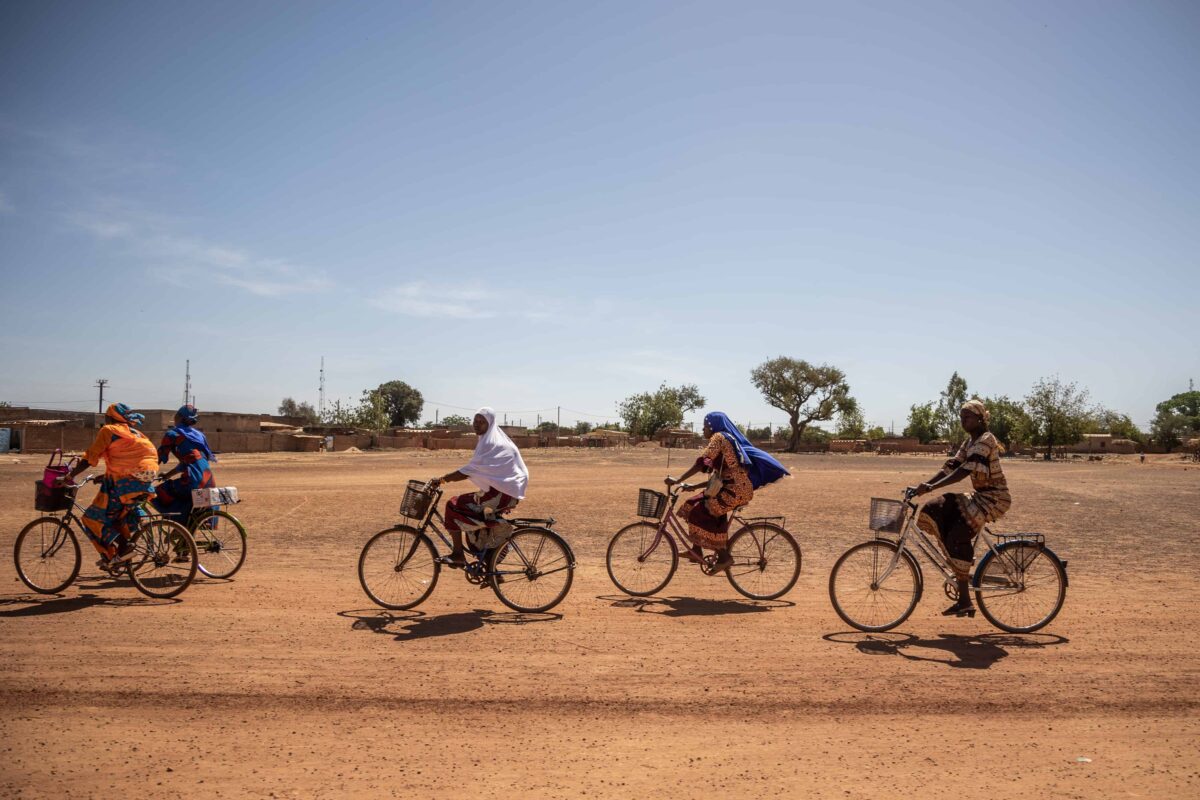
In political systems weakened by conflict or fragility, panelists said their experience implementing governance projects has demonstrated that building a constructive partnership between local governments and communities requires honest conversations, establishing mutual goals and a shared understanding.
A first step in the path to trust is understanding the key players in local governance, said Yeshimebet Aynie, Capacity Strengthening Manager for the USAID-funded Ethiopia Civic Engagement Activity implemented by Creative.
“As a starting point, we conduct analysis of key local governance actors,” Aynie told the webinar audience on Dec. 5, 2023. “We focused on the council, elected councilors, the administration, and the citizens. The three points, and what their relations look like there, is the social accountability that we want to focus on between the citizens and the service providers.”
Accountability is critical, panelists said, since stakeholders cannot constantly monitor each other’s activities.
Trust and accountability are even more complicated when governmental leaders are reluctant to share power and information. In countries such as Burkina Faso and Mali, where military juntas are in control, panelists said every step of the journey is delicate.
“Our approach has been cautious in doing different analyses,” said Jean-Louis, head of the Burkina Faso project. “We have to navigate with all the pressure and tension, mainly the political crisis and the lack of trust between citizens and the [leaders of] these two war-torn countries.”
Practitioners said governments can regain the trust of their citizens when they demonstrate good faith in improving the provision of public services. But even if the government gains citizens’ trust, it can be undermined if it cannot make good on its promises.
“It’s very important to make sure that you don’t end up with this process with a wish list at the end set up by the population, but then nothing can be implemented,” said Eva Peppelman, who directs VNG’s programs in Burundi, Mali and the Democratic Republic of the Congo as Project Manager in VNG’s Business Unit for West and Central Africa.
In such instances, a project can support the relationship by providing incremental resources and supporting revenue generation, Peppelman said.
“In the short term, the use of small grants to be able to implement small actions from these plans – based on participative needs from the community – shows the community that participation actually pays off directly with services or improvements that they can feel,” Peppelman said.
A similar result was achieved in Burkina Faso, where the government had struggled to meet the demand for identity cards. Still, a mayor’s office provided 45,000 I.D. cards to citizens.
“We can see people coming from all over the place, being in line for 1 to 2 hours to get their card, because this card gives them access to other services,” said Jean-Louis of the Burkina Faso project.
Governance practitioners can play a valuable role in helping government officials confront how they are not meeting their citizens’ needs. In southern Ethiopia, citizens had to travel most of the day to get clean water. Having an outside party in place to bridge the gap between the citizens and the government moved leaders to confront the untenable situation and make progress.
“Once (the citizens) participated in the dialogue with service providers and the local government, they were able to influence them to allocate a budget,” said Yeshimebet.
Outside of trust and communication, speakers in the webinar also stressed different tools they employ to empower struggling communities. One is the community scorecard, an accountability tool that helps plan, monitor, assess and evaluate public services.
“It is a very empowering tool,” said Aynie of the Ethiopia Civic Engagement Activity. “We bring citizens together. Those empowered people raise their issues, voice their issues, demand improvements in dialogues, and that leads to a shared understanding of the citizens’ concerns and the shared development of shared action plans and solutions to address improvement.”
Barry Reed, Chief of Party for the USAID-funded Vietnam Local Capacity Development Program implemented by Creative, stressed the interconnectedness of all the elements.
“There’s a ripple effect of each activity that you undertake. It ripples out and impacts other things. At the root of it, our teams are supporting what needs to happen to make life on the ground better. How do we really make that happen for every single person on the ground to make sure the lasting effects of our work for the long term?”
USAID’s LEARN to Read supports mother tongue literacy for more than 3.5 million primary schoolers in Nigeria. Through its inclusive, child-centered approach, LEARN to Read encourages lasting peace through learning. “We have given individuals at different levels equal opportunities,” said Jamila Dahiru, the Commissioner for Education in Bauchi State.
“So we see that playing a vital role in enhancing social and cultural, and even political, co-existence and balances in our society, which will now translate to having a peaceful environment for us to thrive.” The Leveraging Education Assistance Resources in Nigeria (LEARN) to Read program leverages technical expertise for better early-grade reading outcomes across Nigeria. The program helps strengthen and scale global best practices for early-grade reading across the country.